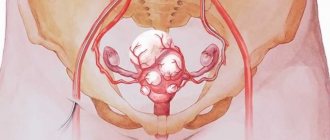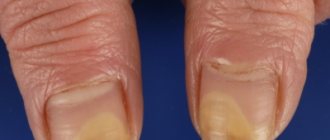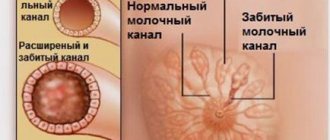| “Mom forbids me to go to water aerobics. She claims that such activities can provoke the growth of fibroids and even cause bleeding. Is she right? Olga N., Moscow |
| “I read that uterine fibroids are an endocrine disease. Is it related to thyroid diseases? How to combine treatment? Olga Lavrova, Tomsk |
| “One of my friends claims that she cured fibroids with infusions of the onosma flower. Could this be the case? And if so, how to use it correctly?” G.Zh., Almaty |
| “During my annual medical examination, I was diagnosed with a fibroid measuring 8 mm. The doctor said that there is no need to treat. Maybe she’s wrong, and I should look for another doctor, after all, fibroids are a serious matter?” Maryana, Klin |
| “A year ago, I had a submucous uterine fibroid removed using hysteroresectoscopy. Now a formation can be seen in this place again. The doctor suggests doing the same operation again. So now you’ll have to see a surgeon every year?” T.N., Moscow |
| “In our family, all women suffer from fibroids: grandmother, mother, older sister. I see how much effort it takes them to keep their illness under control. And I really want to avoid this fate. Are there any effective preventive measures?” Maria Weber, Minsk |
| “I learned that now it is possible to remove fibroids without surgery - using embolization. But they say that after this they always get better and the temperature and stomach ache last for several months. Is this really true? Olga Meliskina, St. Petersburg |
What herbs can you drink: types
To combat benign tumors, you can use many herbal mixtures. Some of them have a fairly strong effect and are able to stop or slow down the development of the process even in the last serious stages of the disease.
According to their effects, medicinal plants are divided into several groups:
- antitumor (cytostatic):
- painkillers;
- anti-inflammatory;
- hemostatic;
Official medicine does not approve of self-medication, since most of the herbs used are poisonous and can cause harm if used incorrectly.
Particular care is required in the use of antitumor plants (hemlock, cinquefoil, mistletoe, laccone, wrestler and others).
An overdose can lead to dire consequences. Safer are celandine, tartar, sage grass, red brush, and hogweed. They immediately have a complex effect: they relieve pain, stop bleeding and relieve inflammation.
Herbal medicine is an effective method of treatment
Herbal medicine is used for this disease separately or as part of complex treatment. In folk medicine, various herbal infusions are used to alleviate a woman’s condition and slow down or stop the development of a benign tumor. They help remove unfavorable symptoms from using hormonal pills: nervousness, depression, sweating, headaches. The result of treatment depends on the severity of the disease, the nature of its course, as well as the causes of the disease.
Causes of fibroids:
- hormonal imbalances;
- decreased immunity;
- heredity;
- hypertension;
- obesity and diabetes.
There are many factors that could cause this problem. Treatment is selected based on the causes of the disease and is aimed directly at eliminating them.
Therefore, before starting the course, it is recommended to conduct a comprehensive medical examination to identify the root cause.
Therapeutic effect of herbal medicine:
- stabilizes hormone levels;
- strengthens the immune system;
- stops uterine bleeding;
- regulates the monthly cycle;
- eliminates menstrual pain;
- slows down the growth of tumor cells.
To successfully combat the female disease, it is important to say goodbye to bad habits, as well as maintain a proper diet and daily routine.
Where can I buy
To obtain good results in the treatment of fibroids, the quality of the starting raw materials of the drugs is of no small importance. The online store “Russian Roots” offers you to purchase ready-made folk remedies or their components for self-production. Delivery in Moscow and the Moscow region is carried out by courier, and to other regions - by mail. You can also purchase the required product in our network of herbal pharmacies.
Attention! All materials published on our website are protected by copyright. When re-publishing, attribution and a link to the original source are required.
Diagnostics
To make an accurate diagnosis, a woman must undergo a number of diagnostic procedures:
- Anamnesis collection and thorough analysis of complaints.
- Gynecological examination.
- Ultrasound of the pelvic organs.
If necessary, the doctor may include studies that provide more detailed information in the diagnostic plan:
- MRI with contrast;
- hysteroscopy (performed to assess the size and location of the submucosal node and determine the tactics for further treatment of the patient);
- sonohysterography (allows you to determine the exact size and location of submucous fibroids).
Causes
Myoma is a hormone-dependent tumor: its formation and growth are influenced by progesterone and estrogens. Most often, fibroids appear when estrogen levels are high, during reproductive age, and regress with the onset of menopause along with a decrease in estrogen levels. This mechanism is triggered under the influence of provoking factors, which include:
- Genetics. The likelihood of tumor formation is higher in women whose immediate family has experienced this disease.
- Diseases of the ovaries, as a result of which the production of hormones is disrupted.
- Repeated abortions, diagnostic curettages.
- Lack of own children.
- Excess weight combined with low physical activity.
- Chronic inflammatory diseases affecting the genital area.
- Endocrine disorders due to diabetes, thyroid diseases.
- Frequent stress, prolonged psycho-emotional stress.
Symptoms of the disease
In approximately 50% of cases, fibroids do not reveal themselves, are asymptomatic and are detected by chance during an ultrasound examination. When the tumor becomes large, clinical signs appear:
- Pain localized in the lower abdomen. If the tumor presses on the nerve plexuses, the pain has a pulling character. With rapid growth, it becomes more pronounced, and submucous fibroids can be accompanied by paroxysmal pain if its legs are twisted.
- Menstrual irregularities; Heavy and prolonged menstruation is common. Acyclic bleeding often appears.
- Constipation, frequent urination due to dysfunction of the bladder and rectum.
- Infertility occurs when a tumor obstructs the patency of the fallopian tubes or is located in the cervix, preventing the passage of sperm.
Complications
In approximately 10% of women with fibroids, it causes miscarriage. The risk is especially high in the second and third trimesters, when due to the growth of the node, there is little space for the development of the fetus in the uterus. In addition, the tumor negatively affects blood circulation in the placenta, as a result of which the fetus lacks oxygen and nutrients. However, if the tumor is small, it does not create any obstacles to normal pregnancy.
Complications can occur not only during pregnancy. The most common among them:
- Anemia due to heavy regular blood loss, accompanied by weakness, dizziness, and fatigue.
- Torsion of the pedicle of the submucosal node due to physical exertion and muscle tension. It is characterized by acute pain, nausea, fever, and vomiting.
- Compression of internal organs due to extremely rapid tumor growth, which leads to disruption of their functions and the appearance of chronic diseases.
- Prolapse of fibroids localized in the lower parts of the uterus.
- Postpartum bleeding caused by vascular hypertrophy and the inability of the uterus to fully close.
Malignancy of fibroids occurs extremely rarely (less than 1% of cases). This is facilitated by bad habits, excess weight, accelerated blood flow due to high physical activity, and frequent warming up in the uterine area.
Diagnosis of the disease
Diagnosis of fibroids begins with a gynecological examination, during which the doctor detects an enlarged size and uneven surface of the uterus. To clarify the diagnosis, an ultrasound examination is performed to determine the location and size of the nodes, in combination with Doppler ultrasound, thanks to which the fibroid is differentiated from a malignant tumor.
A prerequisite for treatment is the correction of hormonal levels, so tests are prescribed to determine the level of adrenal and thyroid hormones. Additionally, CT, MRI, biopsy, and laparoscopy can be performed to determine the nature of the tumor and assess the condition of neighboring organs.
Treatment of fibroids
Determining the treatment strategy for fibroids depends on its size, location, severity of symptoms and other factors. All existing methods can be combined into three groups - waiting, conservative treatment, surgical intervention.
Waiting tactics
If the disease does not manifest itself, and the size of the node is small, pregnancy is not planned, the doctor may suggest monitoring the development of the tumor, monitoring its condition using ultrasound. At the same time, patients are not recommended to spend long periods of time in the sun, perform high physical activity, lift heavy objects, visit baths and saunas, or have abortions.
Conservative treatment
Conservative tactics involve correction of hormonal levels using the following drugs:
- Gonadoropin-releasing hormone agonists that suppress the gonadotropic function of the pituitary gland. As a result of taking them, the volume of the tumor decreases, pain and bleeding stop.
- Derivatives of gestagens that interfere with the production of ovarian hormones.
Another conservative treatment method is FUS ablation. It involves exposing the nodes to ultrasound under MRI guidance, as a result of which the tumor cells are heated and destroyed. This technique is organ-saving and does not require hospitalization, but it is still experimental. Also, non-surgical treatment methods include uterine artery embolization. The procedure involves inserting balls (emboli) into the artery, blocking the blood flow, causing the tumor to necrotize.
Surgery
Radical hysterectomy (removal of the uterus) is used much less frequently today than in the past. The absolute indications for its implementation are uterine prolapse and suspicion of a malignant tumor. Experienced doctors at the Repromed clinic in Chelyabinsk conduct a thorough diagnosis and, in the absence of absolute indications, give preference to minimally invasive surgical techniques, namely myomectomy - removal of fibroids using a laparoscope or hysteroscope, depending on its location.
Traditional methods of treating fibroids using medicinal herbs are also known, but their effectiveness has not been proven, and self-medication without diagnosis can lead to serious consequences and complications.
Phytobarrel
Doctors often do not recommend that women with this diagnosis take a steam bath or visit a sauna, although there are also experts who do not see any threat in this. But bathhouse lovers really don’t want to sacrifice their long-term habit and the pleasure of sitting in a steam room. Therefore, the phyto-barrel is an excellent alternative for them.
Sessions conducted in a cedar barrel with decoctions of medicinal herbal mixtures do not have strict contraindications. They are carried out in a more gentle mode, because the air is heated only to 43 degrees.
A sauna with phytoncides has a positive effect on the immune and circulatory system, improves general condition, and normalizes metabolism.
Specifics of treatment with folk remedies
Treatment of fibroids with herbs is a fairly common way to combat this disease in folk medicine, practiced for several centuries. Myoma was effectively treated with celandine, wormwood, boron uterus, sea buckthorn, nettle and other medicinal herbs.
However, despite the positive characteristics of this method, you should not self-medicate and rely solely on the effectiveness of using herbs.
Even if the symptoms that bother the patient are minimized or completely disappear after using folk remedies, this does not mean that the pathology has been eliminated.
The focus of myomatous lesion can be localized for a while, but if atrophy does not occur, the pathology will still continue to develop.











